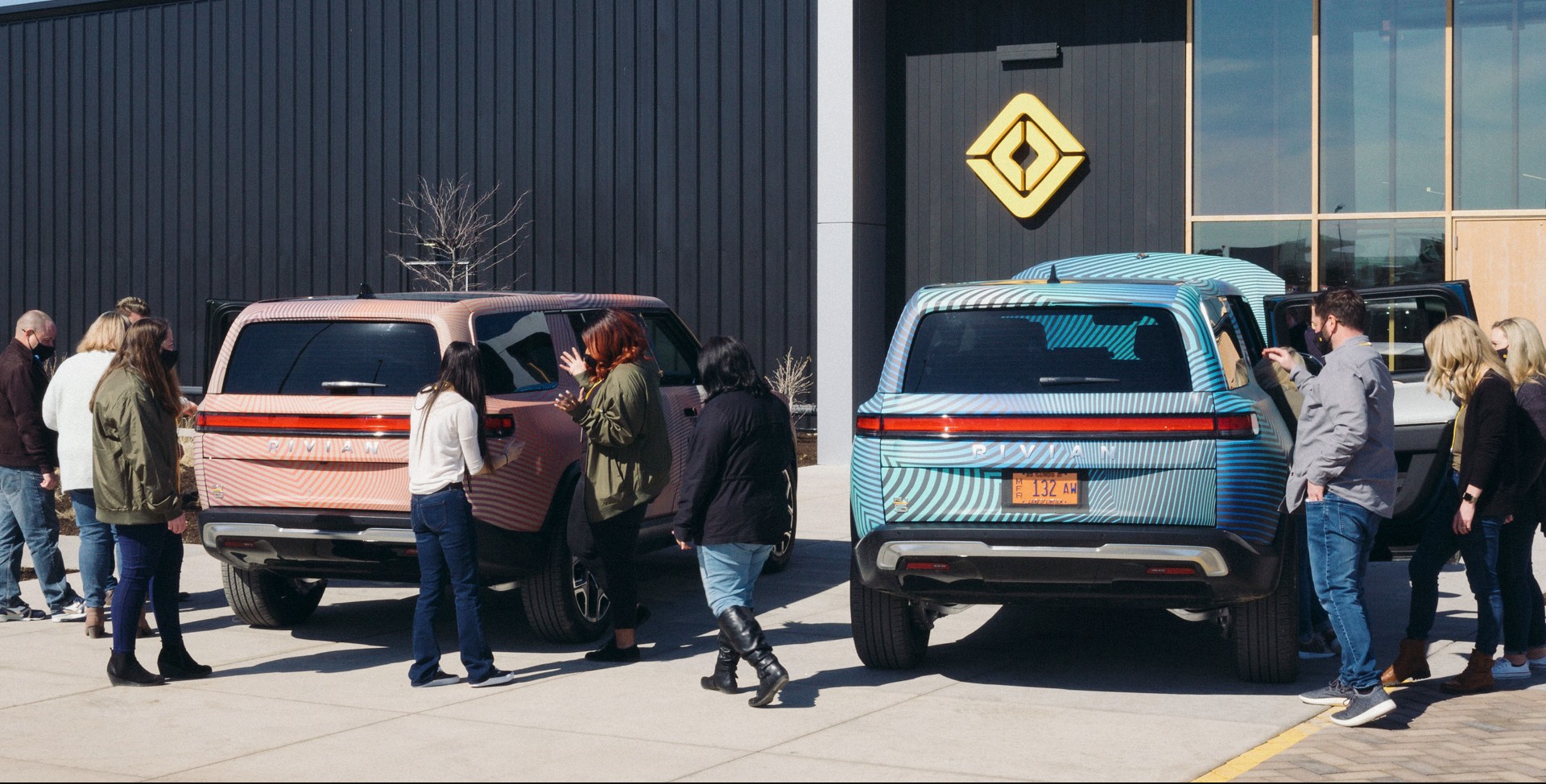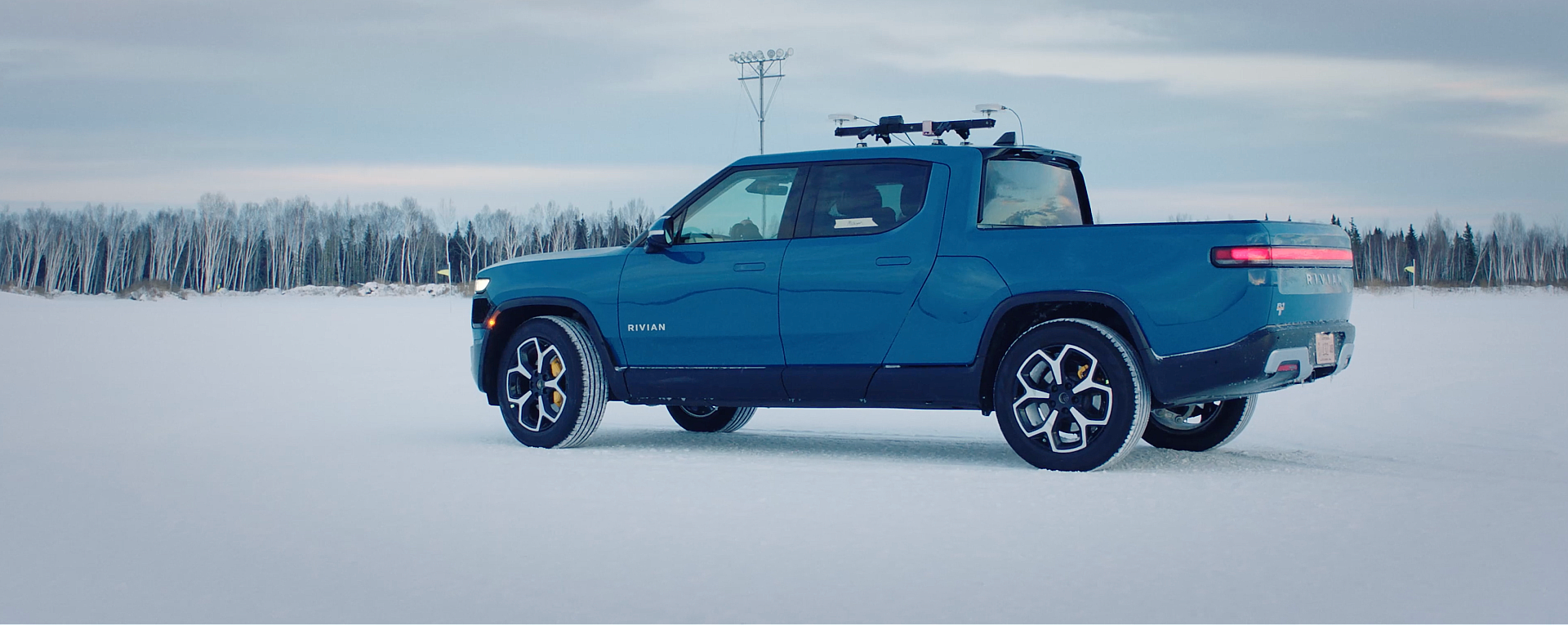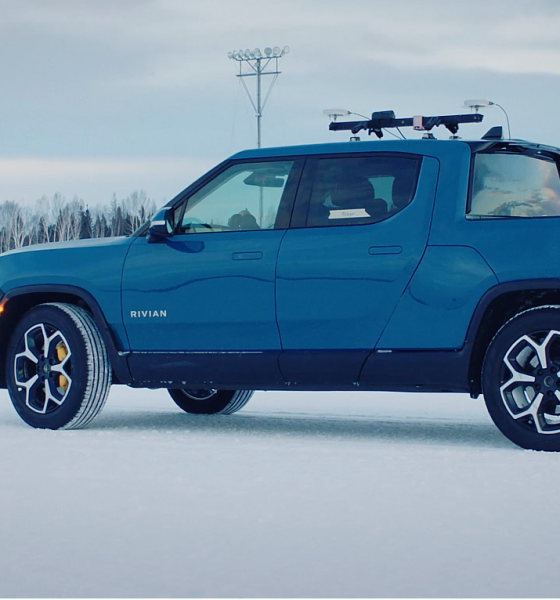Rivian has begun notifying R1T reservation holders of the anticipated June 2021 first deliveries for its all-electric pickup truck.
In a new company communication to reservation holders, Rivian outlined its appreciation for the patience that many future R1T owners have displayed in the past year. “As we’ve been building our vehicles and support services in preparation for deliveries this June, you’ve been patiently waiting. We can’t thank you enough for being on this journey with us and allowing us the time to get the details right,” the company said.
With initial deliveries of the R1T all-electric pickup originally scheduled for late 2020, the COVID-19 pandemic, unfortunately, halted any construction to the company’s Normal, Illinois, production facility from taking place. Instead, a skeleton crew of just 11 essential workers was put into place at the plant, responsible for implementing basic and necessary utilities into the new facility, such as plumbing.
Now, Rivian is preparing owners to take possession of the first builds of its initial vehicle release. The R1T owners will not be thrown to the wolves in their first months as Rivian owners, as the automaker also introduced a new program known as “Rivian Guides” in the email to reservation holders.
“As a preorder holder — and soon-to-be owner — you will be paired with a dedicated Rivian Guide who will serve as your single point of contact from the moment your vehicle enters our production queue and for as long as you own your Rivian. Any questions you have, you can call, text or email your Guide,” the company said.
The guides are responsible for making the transition to owning a Rivian vehicle as seamless as possible. Whether owners are familiar with driving electric cars, or this will be their first experience with a battery-powered powertrain, nobody will be left to feel overwhelmed with the new vehicle that they have in front of them. Every Rivian preorder holder will be paired with a dedicated Rivian Guide who will serve as the point of contact for the entire ownership experience of the vehicle. “They are your direct line to all things Rivian,” the memo said, indicating that the Rivian guide will be with the vehicle owner for life.
Credit: Rivian
Whatever the concern, Rivian is sure that the personalized guide will have the correct knowledge to take care of it. “Right now, our Guides are going through rigorous product and systems training, spending hours preparing and collaborating with practically every department across the company.” Upon initial contact with the Rivian Guide, which will occur in May, Launch Edition preorder holders will be contacted first. It will involve a one-on-one introduction process and a finalizing of the order process. Reservation holders will be able to modify their vehicle configurations and schedule their delivery times.
Rivian has only three months until the first deliveries will begin. The company is currently putting the finishing touches on the production lines at the Normal, Illinois, production plant, with plenty of plans for expansion as it will gear up for the R1S all-electric SUV’s production and deliveries soon after. Recently acquired documents show that Rivian is building significant projects in the areas immediately surrounding the Normal plant, indicating the company is ready for a full-fledged production push of its electric vehicles in 2021, ready to enter a highly-competitive and quickly growing market.
Rivian R1T spotted on public roads once again prior to launch
A blog on Rivian’s Guide program is available here.

News
Elon Musk’s Grok AI to be used in U.S. War Department’s bespoke AI platform
The partnership aims to provide advanced capabilities to 3 million military and civilian personnel.

The U.S. Department of War announced Monday an agreement with Elon Musk’s xAI to embed the company’s frontier artificial intelligence systems, powered by the Grok family of models, into the department’s bespoke AI platform GenAI.mil.
The partnership aims to provide advanced capabilities to 3 million military and civilian personnel, with initial deployment targeted for early 2026 at Impact Level 5 (IL5) for secure handling of Controlled Unclassified Information.
xAI Integration
As noted by the War Department’s press release, GenAI.mil, its bespoke AI platform, will gain xAI for the Government’s suite of tools, which enable real-time global insights from the X platform for “decisive information advantage.” The rollout builds on xAI’s July launch of products for U.S. government customers, including federal, state, local, and national security use cases.
“Targeted for initial deployment in early 2026, this integration will allow all military and civilian personnel to use xAI’s capabilities at Impact Level 5 (IL5), enabling the secure handling of Controlled Unclassified Information (CUI) in daily workflows. Users will also gain access to real‑time global insights from the X platform, providing War Department personnel with a decisive information advantage,” the Department of War wrote in a press release.
Strategic advantages
The deal marks another step in the Department of War’s efforts to use cutting-edge AI in its operations. xAI, for its part, highlighted that its tools can support administrative tasks at the federal, state and local levels, as well as “critical mission use cases” at the front line of military operations.
“The War Department will continue scaling an AI ecosystem built for speed, security, and decision superiority. Newly IL5-certified capabilities will empower every aspect of the Department’s workforce, turning AI into a daily operational asset. This announcement marks another milestone in America’s AI revolution, and the War Department is driving that momentum forward,” the War Department noted.
News
Tesla FSD (Supervised) v14.2.2 starts rolling out
The update focuses on smoother real-world performance, better obstacle awareness, and precise end-of-trip routing, among other improvements.

Tesla has started rolling out Full Self-Driving (Supervised) v14.2.2, bringing further refinements to its most advanced driver-assist system. The new FSD update focuses on smoother real-world performance, better obstacle awareness, and precise end-of-trip routing, among other improvements.
Key FSD v14.2.2 improvements
As noted by Not a Tesla App, FSD v14.2.2 upgrades the vision encoder neural network with higher resolution features, enhancing detection of emergency vehicles, road obstacles, and human gestures. New Arrival Options let users select preferred drop-off styles, such as Parking Lot, Street, Driveway, Parking Garage, or Curbside, with the navigation pin automatically adjusting to the user’s ideal spot for precision.
Other additions include pulling over for emergency vehicles, real-time vision-based detours for blocked roads, improved gate and debris handling, and extreme Speed Profiles for customized driving styles. Reliability gains cover fault recovery, residue alerts on the windshield, and automatic narrow-field camera washing for new 2026 Model Y units.
FSD v14.2.2 also boosts unprotected turns, lane changes, cut-ins, and school bus scenarios, among other things. Tesla also noted that users’ FSD statistics will be saved under Controls > Autopilot, which should help drivers easily view how much they are using FSD in their daily drives.
Key FSD v14.2.2 release notes
Full Self-Driving (Supervised) v14.2.2 includes:
- Upgraded the neural network vision encoder, leveraging higher resolution features to further improve scenarios like handling emergency vehicles, obstacles on the road, and human gestures.
- Added Arrival Options for you to select where FSD should park: in a Parking Lot, on the Street, in a Driveway, in a Parking Garage, or at the Curbside.
- Added handling to pull over or yield for emergency vehicles (e.g. police cars, fire trucks, ambulances).
- Added navigation and routing into the vision-based neural network for real-time handling of blocked roads and detours.
- Added additional Speed Profile to further customize driving style preference.
- Improved handling for static and dynamic gates.
- Improved offsetting for road debris (e.g. tires, tree branches, boxes).
- Improve handling of several scenarios, including unprotected turns, lane changes, vehicle cut-ins, and school buses.
- Improved FSD’s ability to manage system faults and recover smoothly from degraded operation for enhanced reliability.
- Added alerting for residue build-up on interior windshield that may impact front camera visibility. If affected, visit Service for cleaning!
- Added automatic narrow field washing to provide rapid and efficient front camera self-cleaning, and optimize aerodynamics wash at higher vehicle speed.
- Camera visibility can lead to increased attention monitoring sensitivity.
Upcoming Improvements:
- Overall smoothness and sentience.
- Parking spot selection and parking quality.
News
Tesla is not sparing any expense in ensuring the Cybercab is safe
Images shared by the longtime watcher showed 16 Cybercab prototypes parked near Giga Texas’ dedicated crash test facility.

The Tesla Cybercab could very well be the safest taxi on the road when it is released and deployed for public use. This was, at least, hinted at by the intensive safety tests that Tesla seems to be putting the autonomous two-seater through at its Giga Texas crash test facility.
Intensive crash tests
As per recent images from longtime Giga Texas watcher and drone operator Joe Tegtmeyer, Tesla seems to be very busy crash testing Cybercab units. Images shared by the longtime watcher showed 16 Cybercab prototypes parked near Giga Texas’ dedicated crash test facility just before the holidays.
Tegtmeyer’s aerial photos showed the prototypes clustered outside the factory’s testing building. Some uncovered Cybercabs showed notable damage and one even had its airbags engaged. With Cybercab production expected to start in about 130 days, it appears that Tesla is very busy ensuring that its autonomous two-seater ends up becoming the safest taxi on public roads.
Prioritizing safety
With no human driver controls, the Cybercab demands exceptional active and passive safety systems to protect occupants in any scenario. Considering Tesla’s reputation, it is then understandable that the company seems to be sparing no expense in ensuring that the Cybercab is as safe as possible.
Tesla’s focus on safety was recently highlighted when the Cybertruck achieved a Top Safety Pick+ rating from the Insurance Institute for Highway Safety (IIHS). This was a notable victory for the Cybertruck as critics have long claimed that the vehicle will be one of, if not the, most unsafe truck on the road due to its appearance. The vehicle’s Top Safety Pick+ rating, if any, simply proved that Tesla never neglects to make its cars as safe as possible, and that definitely includes the Cybercab.










